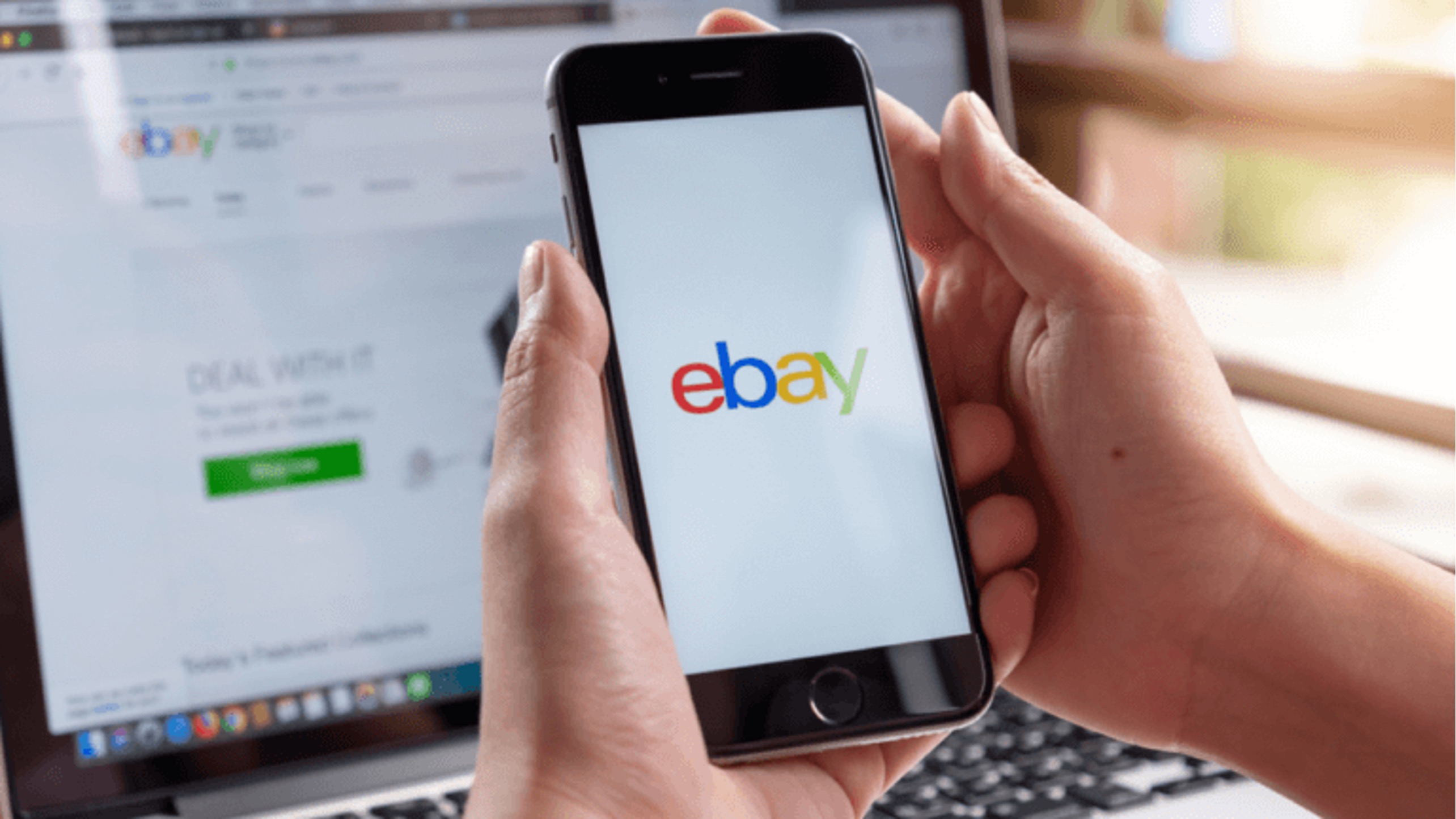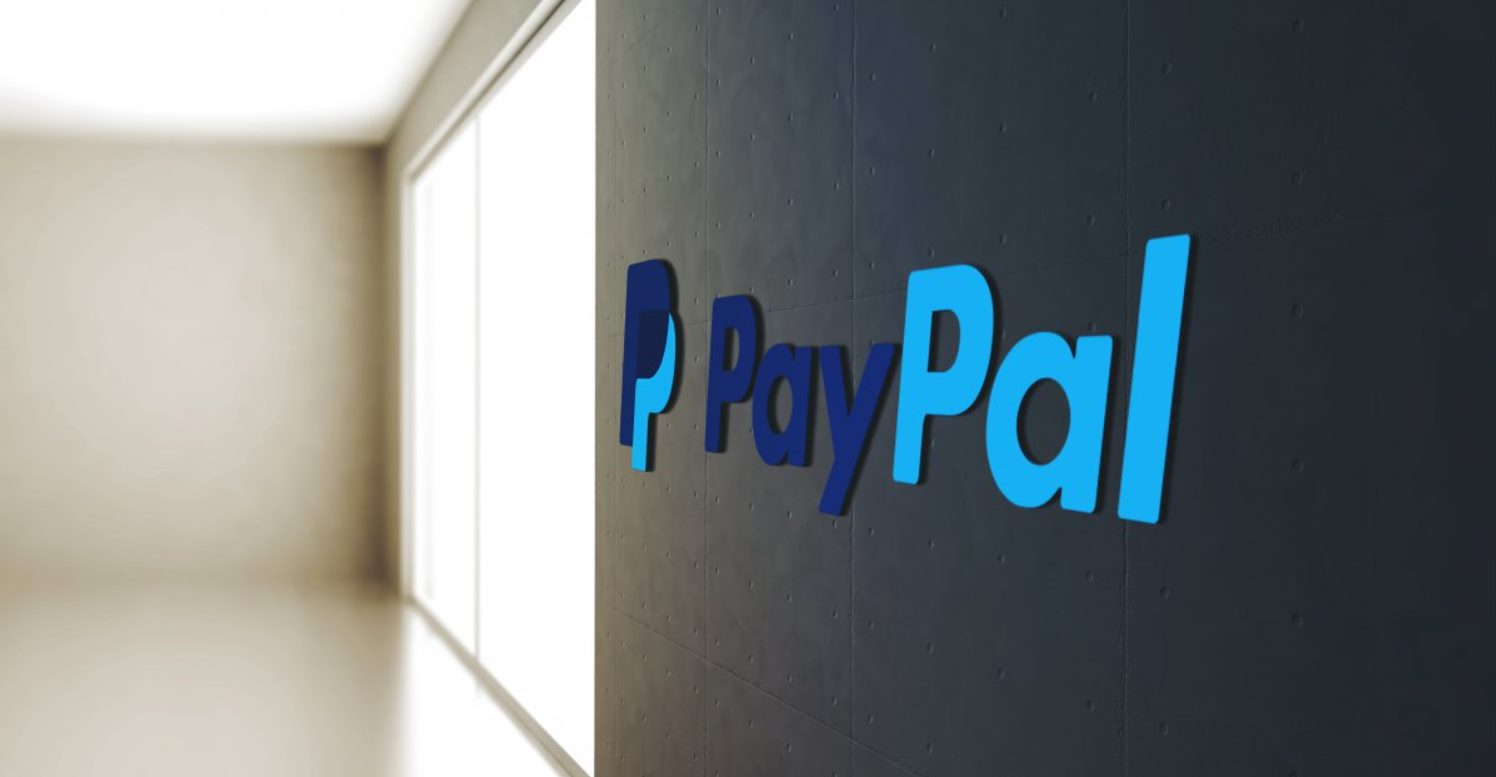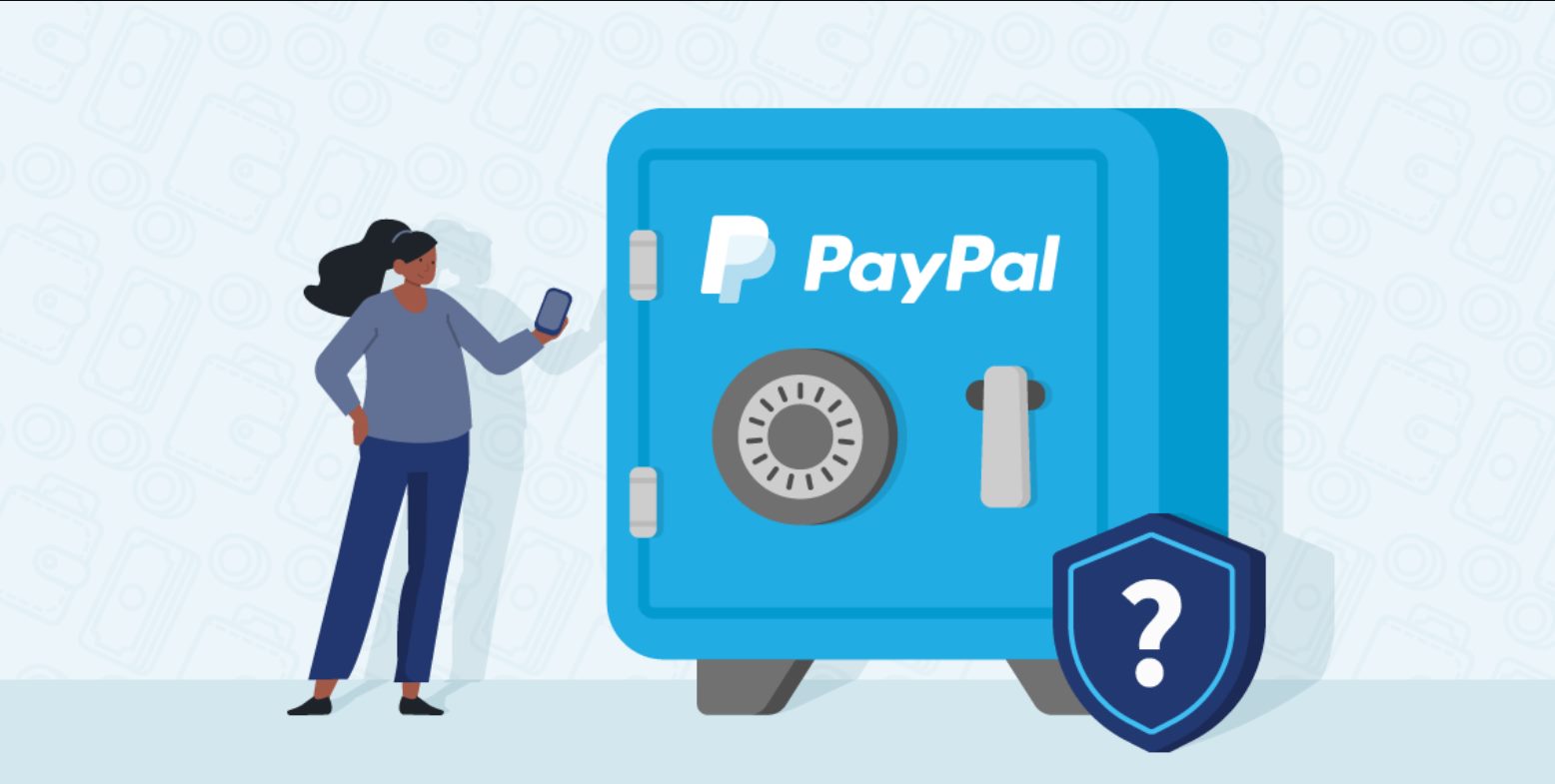Introduction
Welcome to the world of online selling! If you’re considering becoming an eBay seller, you may have heard that PayPal is the dominant payment processor used on the platform. However, did you know that it is now possible to get paid on eBay without having to solely rely on PayPal?
In the past, eBay sellers were required to use PayPal as their primary payment method. However, eBay introduced a new payment system called eBay Managed Payments, which allows sellers to receive payment directly into their bank account, bypassing the need for PayPal. This new feature gives sellers more options and flexibility when it comes to accepting payments from buyers.
Whether you have personal reasons for not using PayPal or you simply want to explore alternative payment options, this article will guide you through the process of getting paid on eBay without relying solely on PayPal. We will explore different payment processors and methods that you can integrate into your eBay seller account to ensure a smooth and efficient payment process for both you and your buyers.
By diversifying your payment options, you can attract a wider range of buyers who prefer different payment methods. Offering multiple payment options can also increase trust and convenience for your customers, leading to more successful transactions and repeat business.
Ready to learn how to get paid on eBay without PayPal? Let’s dive into the various methods and alternatives that you can utilize to ensure you receive your hard-earned money seamlessly.
Creating an eBay Seller Account
The first step in getting paid on eBay is to create a seller account. If you haven’t already done so, go to the eBay website and click on the “Register” or “Sell” button to start the account creation process.
During the registration process, you will be asked to provide personal information such as your name, address, and contact details. Make sure to fill in all the required fields accurately and to choose a username that is professional and easy to remember.
Once you have completed the initial registration, eBay will ask you to set up your payment preferences. In the past, this step would have required you to link a PayPal account to your eBay account. However, with eBay Managed Payments, you can now choose alternative payment processors.
When setting up your payment preferences, eBay will ask you to provide banking information so that they can deposit your earnings directly into your bank account. This process is secure and ensures that you receive your payments quickly and efficiently.
It is important to note that while eBay Managed Payments offers alternative payment options, PayPal may still be available as one of the payment methods that buyers can choose. This means that even if you opt not to use PayPal as your primary payment processor, you may still receive payments from buyers using PayPal.
Once you have set up your payment preferences, you are ready to start selling on eBay and accept payments through the selected payment processors. Keep in mind that eBay may require some additional verification steps to ensure the security of your account and the transactions carried out on the platform.
Now that you have successfully created your eBay seller account and set up your payment preferences, it’s time to explore the various alternative payment methods that you can integrate into your account. These alternative methods can provide more options for buyers to pay for their purchases and ensure a smooth and convenient payment process for both parties involved.
Understanding eBay Managed Payments
eBay Managed Payments is a new payment system introduced by eBay that allows sellers to receive payments directly into their bank account, eliminating the need to rely solely on PayPal. With eBay Managed Payments, sellers have more control and flexibility over their payment options, making it easier to manage transactions and get paid.
One of the main benefits of eBay Managed Payments is the ability to consolidate all payments received from buyers into a single account. This means that you can receive payments from different buyers using various payment methods, such as credit cards or alternative payment processors, all in one place. This streamlines the payment process and makes it easier to keep track of your earnings.
Another advantage of eBay Managed Payments is the ability to receive payments directly into your bank account, typically within two business days of a sale being made. This reduces the waiting time for funds to be transferred, allowing you to access your earnings more efficiently.
Through eBay Managed Payments, sellers also have access to simplified pricing and fee structures. Unlike the complex fee structure typically associated with PayPal, eBay Managed Payments consolidates all fees into one invoice, making it easier to understand your costs and manage your finances.
Furthermore, eBay Managed Payments provides customer service support for both sellers and buyers. If any issues or disputes arise regarding payments, you can reach out to eBay’s customer service team for assistance and resolution. This added support helps to ensure a smooth and positive transaction experience for both parties.
It’s important to note that while eBay Managed Payments offers a more streamlined and flexible payment system, it does come with its own set of guidelines and requirements. Sellers must comply with eBay’s policies and follow any additional verification steps necessary to participate in eBay Managed Payments.
Overall, understanding eBay Managed Payments is essential for sellers who want to get paid on eBay without relying solely on PayPal. By familiarizing yourself with this payment system, you can take full advantage of the benefits it offers and ensure a smooth and efficient payment process for your eBay transactions.
Setting Up Alternative Payment Processors
While eBay Managed Payments offers a convenient way to receive payments directly into your bank account, you may still want to explore additional payment processors to offer your buyers more options. Integrating alternative payment processors can attract a wider range of customers and provide a seamless checkout experience. Here are some popular alternative payment processors you can consider:
- Stripe: Stripe is a widely used payment processor that allows you to accept credit card payments directly on your eBay listings. To set up Stripe, you will need to create a Stripe account and link it to your eBay seller account. Once the integration is complete, buyers will have the option to pay by credit card at checkout.
- Authorize.Net: Another popular payment processor is Authorize.Net. It enables you to accept credit card payments and offers additional features such as recurring billing and fraud protection. To set up Authorize.Net, you will need to create an account with them and follow the integration instructions provided by eBay.
- 2Checkout: 2Checkout is a global payment processor that supports a wide range of payment methods such as credit cards, PayPal, and various alternative payment options. Setting up 2Checkout involves creating an account with them and integrating it into your eBay seller account.
- Amazon Pay: Amazon Pay allows buyers to use their Amazon account to make purchases on eBay. By integrating Amazon Pay, you can tap into the millions of customers who already have an Amazon account and streamline the checkout process for them.
- Google Pay and Apple Pay: Integrating Google Pay and Apple Pay into your eBay seller account allows buyers to conveniently make purchases using their saved payment methods on their respective devices. These options provide a fast and secure way for buyers to complete transactions.
When setting up alternative payment processors, it’s important to follow the integration instructions provided by the specific processor and ensure that your account is properly linked to your eBay seller account. This will ensure a smooth checkout process and allow buyers to easily select their preferred payment method.
By offering multiple payment options through alternative processors, you can cater to different buyer preferences and increase the likelihood of successful transactions. Keep in mind that each payment processor may have its own fee structure, so it’s important to understand and factor in these costs when pricing your items on eBay.
Now that you are aware of some popular alternative payment processors, you can decide which ones align with your business needs and integrate them into your eBay seller account. The next step is to explore how to accept credit and debit card payments, as this is a common payment method preferred by many buyers.
Accepting Credit and Debit Card Payments
One of the most common payment methods used by buyers is credit and debit cards. By accepting these forms of payment, you can cater to a wide range of customers and increase your chances of making successful sales on eBay. Here are the steps to enable credit and debit card payments:
1. Choose a Payment Processor: As mentioned earlier, integrating a payment processor like Stripe, Authorize.Net, or 2Checkout allows you to accept credit and debit card payments directly on your eBay listings. These processors provide secure payment gateways that encrypt and process customer payment information, ensuring a safe transaction.
2. Link Your eBay Account: Follow the integration instructions provided by your chosen payment processor to link it to your eBay seller account. This typically involves entering your account details and setting up the necessary API credentials for communication between eBay and the processor.
3. Enable Credit and Debit Card Option: Once your payment processor is successfully integrated, eBay will automatically display the option for buyers to pay with credit and debit cards on your listings. This allows them to easily select this payment method at checkout.
4. Set Up Secure Checkout: It is essential to ensure a secure checkout process when accepting credit and debit card payments. Your chosen payment processor should provide you with the necessary tools, such as fraud protection measures and SSL encryption, to protect both you and your buyers during transactions.
5. Communicate Accepted Payment Methods: To avoid confusion and potential misunderstandings with buyers, clearly communicate the accepted payment methods in your listing descriptions. This will help buyers know what options are available and reduce the likelihood of payment issues.
6. Promptly Process Card Payments: When a buyer pays with a credit or debit card, make sure to process the payment promptly to ensure a smooth transaction. Delayed processing may result in buyer dissatisfaction and potentially impact your seller reputation.
By accepting credit and debit card payments, you provide a convenient and widely used payment option for eBay buyers. This not only increases your chances of completing sales but also helps build trust and confidence in your business.
It’s important to note that each payment processor may have its own fee structure for credit and debit card transactions. Make sure to familiarize yourself with these fees and factor them into your pricing strategy to ensure that you are covering your costs and maximizing your profits.
Now that you have set up credit and debit card payment acceptance, let’s explore how to incorporate popular mobile payment options like Apple Pay and Google Pay into your eBay seller account.
Accepting Apple Pay and Google Pay
In today’s digital age, mobile payment options like Apple Pay and Google Pay have become increasingly popular among consumers. By incorporating these convenient and secure payment methods into your eBay seller account, you can offer a seamless checkout experience for buyers who prefer using their mobile devices for transactions. Here’s how to accept Apple Pay and Google Pay:
1. Check Compatibility: Before enabling Apple Pay and Google Pay on your eBay listings, ensure that your device and payment processor support these payment methods. Apple Pay is compatible with iOS devices such as iPhones, iPads, and MacBooks, while Google Pay is available for Android devices.
2. Integrate Payment Processor: If your chosen payment processor supports Apple Pay and Google Pay, follow the integration instructions provided by the processor to enable these mobile payment options for your eBay account. This typically involves configuring the necessary settings and linking your payment processor to your eBay seller account.
3. Enable Apple Pay and Google Pay in Listings: Once the integration is complete, eBay will automatically display the options for buyers to pay using Apple Pay and Google Pay on your listings. This allows them to conveniently complete their transactions by simply using their mobile devices.
4. Ensure Secure Checkout: Apple Pay and Google Pay provide built-in security measures, such as tokenization, which help protect the buyer’s payment information during the transaction. However, it’s essential to follow the recommended security practices provided by your payment processor to ensure a safe and trustworthy checkout process.
5. Communicate Payment Options: Transparency is key to a successful transaction. Clearly communicate the availability of Apple Pay and Google Pay in your listings’ descriptions, so buyers are aware of the mobile payment options they can use. This can help attract potential buyers who prefer using these convenient payment methods.
6. Provide a User-Friendly Experience: Make sure that your listing and checkout process are optimized for mobile devices. Mobile-friendly designs and easy navigation can enhance the overall experience for buyers using Apple Pay and Google Pay, encouraging a smooth and hassle-free transaction.
By accepting Apple Pay and Google Pay, you cater to the growing number of buyers who prefer using their mobile devices for payments. These mobile payment options offer speed, convenience, and an added layer of security, making them an attractive choice for many consumers.
Keep in mind that while Apple Pay and Google Pay are widely accepted, not all buyers may have access to these payment methods. It’s important to continue offering alternative payment options like credit cards or PayPal to accommodate all potential buyers.
Now that you have integrated Apple Pay and Google Pay into your eBay seller account, let’s explore how to accept offline payments for those buyers who prefer to pay outside of the digital realm.
Accepting Offline Payments
While digital payment methods are widely used, some buyers may prefer to make payments offline. Offering offline payment options can accommodate these customers and provide flexibility in how they choose to pay. Here are some offline payment methods you can consider accepting on eBay:
1. Cash: Accepting cash payments allows buyers to pay in person when they pick up the item. This option is commonly used for local transactions or when meeting buyers in a designated location. However, it’s important to exercise caution and meet in a safe public place when accepting cash payments in person.
2. Bank Transfer: Bank transfers provide a direct way for buyers to transfer funds from their bank accounts to yours. When accepting bank transfers, ensure that you provide clear instructions on how buyers can make the payment, including your bank account details and any reference information required for the transaction.
3. Money Order or Cashier’s Check: Money orders and cashier’s checks are payment methods that can be mailed to you. These payment options provide a secure way for buyers to make payments, as they require funds to be available upfront before the payment is issued.
4. Personal Check: While personal checks are less common in online transactions, some buyers may still prefer to pay using this method. If you choose to accept personal checks, be aware that there is a risk of bounced checks or potential fraud. It is advisable to wait for the check to clear before shipping the item.
5. Other Offline Payment Methods: Depending on your specific circumstances and buyer preferences, you may consider other offline payment options such as in-person credit card payments or payment upon pickup. These methods can be useful for local transactions or for certain types of items that require physical inspection before payment.
When accepting offline payments, make sure to clearly communicate the available options in your eBay listings. Include the specific instructions and any relevant information, such as payment deadlines or preferred forms of offline payment, to ensure a smooth transaction process for both you and the buyer.
It’s important to note that offline payment methods carry certain risks, such as potential fraud or non-payment. Consider these risks and exercise caution when deciding to accept offline payments. Remember to adhere to eBay’s policies and guidelines regarding payment options and always prioritize the safety of both parties involved.
Now that you know how to accept offline payments on eBay, let’s explore the process of managing refunds and cancellations to ensure a fair and efficient resolution in case these situations arise.
Managing Refunds and Cancellations
As an eBay seller, it’s crucial to have a clear understanding of how to handle refunds and cancellations to ensure a fair and positive buying experience for your customers. Sometimes, buyers may request a refund or cancellation due to various reasons. Here’s how you can effectively manage refunds and cancellations on eBay:
1. Understand eBay’s Return Policy: Familiarize yourself with eBay’s return policy to ensure that you meet the platform’s requirements for accepting returns and issuing refunds. eBay provides guidelines on return timelines, conditions for accepting returns, and the responsibility of covering return shipping fees.
2. Clearly State Your Return Policy in Listings: Specify your return policy in your listing descriptions. Indicate whether you accept returns, the timeline for initiating a return, and any specific conditions or criteria that buyers must meet for a refund or cancellation.
3. Communicate and Resolve Issues: When a refund or cancellation request is received, promptly communicate and engage with the buyer to understand their concerns. Address any issues or discrepancies they may have and aim to find a mutually satisfactory resolution.
4. Issue Refunds Promptly: If a refund is agreed upon, process it promptly to demonstrate your commitment to resolving any issues. Ensure that the refund is issued in the same form of payment that the buyer used for the purchase, whether it’s back to their credit card, PayPal account, or other payment method.
5. Handle Cancellations Professionally: If a buyer requests to cancel their order before it is shipped, evaluate the situation and assess if it’s viable to cancel the order. If possible, promptly approve the cancellation and issue a refund to the buyer through the appropriate payment method.
6. Keep Documentation and Records: Maintain clear records of all refund and cancellation requests, communications with buyers, and any receipts or tracking information associated with the transactions. This documentation can serve as evidence in case disputes arise.
7. Review eBay’s Resolution Center: eBay’s Resolution Center provides guidance and tools to help you manage and resolve disputes efficiently. Familiarize yourself with the resources available and utilize them when necessary to address any conflicts that may arise during the refund or cancellation process.
By managing refunds and cancellations in a professional and timely manner, you can maintain a positive reputation as a seller on eBay. Providing excellent customer service and fair resolutions can lead to positive feedback and repeat business from satisfied buyers.
Now that you understand how to handle refunds and cancellations effectively, let’s explore the process of setting up automatic payouts to streamline your payment management on eBay.
Setting Up Automatic Payouts
Managing payments and ensuring that you receive your earnings in a timely manner is an essential part of being an eBay seller. With eBay’s automatic payout feature, you can streamline the payment process by setting up automatic transfers of your funds to your designated bank account. Here’s how to set up automatic payouts:
1. Verify Your Identity and Account: Before you can set up automatic payouts, ensure that you have completed all necessary verification steps and have a fully verified eBay seller account. This may involve providing additional information and documentation to confirm your identity and account details.
2. Visit the Payment Preferences Section: Access the “Payment Preferences” section of your eBay seller account. This can usually be found in the “Account” or “Seller Hub” section, depending on your eBay interface.
3. Set Up Payout Method: Within the Payment Preferences section, you can choose your preferred payment method and set your payout method to “Automatic.” Select the bank account where you want your funds to be automatically transferred.
4. Configure Payout Settings: Depending on your eBay interface, you may have options to customize your automatic payout settings. This includes choosing the payout frequency, such as daily or weekly, and setting payment thresholds for when funds are transferred to your bank account.
5. Review and Confirm: Take a moment to review your automatic payout settings and ensure that all information is accurate. Double-check the bank account details and payout frequency before confirming your settings.
6. Monitor and Adjust: Once your automatic payouts are set up, regularly monitor your account to ensure that funds are being transferred as expected. You can adjust your payout settings at any time if needed, for example, to change the payout frequency or update your bank account details.
7. Be Mindful of Fees and Timing: Keep in mind that there may be transaction fees associated with automatic payouts, depending on your bank or payment processor. Also, note that the timing of funds reaching your bank account may vary depending on factors such as weekends, holidays, and banking procedures.
Setting up automatic payouts on eBay can save you time and effort by automating the transfer of your earnings, providing a convenient and efficient payment management solution. It ensures that you receive your funds regularly without the need for manual intervention.
It’s important to remember to maintain sufficient funds in your eBay account to cover any fees or charges associated with automatic payouts. Monitor your bank account balance to ensure that transfers are processed smoothly.
Now that you have set up automatic payouts, you can enjoy a more streamlined payment process, allowing you to focus on growing your eBay business and providing excellent service to your customers.
Conclusion
Congratulations! You have now learned how to get paid on eBay without solely relying on PayPal. By exploring alternative payment processors, accepting credit and debit card payments, incorporating mobile payment options like Apple Pay and Google Pay, and even considering offline payment methods, you have expanded your payment options and can cater to a wider range of buyers.
eBay Managed Payments offers a convenient way to receive payments directly into your bank account, providing more control and flexibility. By setting up automatic payouts, you can streamline your payment management and ensure a smooth transfer of your earnings.
Managing refunds and cancellations is an important aspect of providing excellent customer service. By following eBay’s return policy, communicating clearly with buyers, and resolving issues promptly, you can maintain a positive buying experience for your customers.
Remember to prioritize the security and privacy of your transactions by adhering to recommended security measures and guidelines provided by your chosen payment processors and eBay’s Resolution Center.
As an eBay seller, embracing diverse payment methods is crucial in attracting a broader customer base and increasing your chances of successful sales. By offering convenient and secure payment options, you enable buyers to complete transactions with ease, building trust and fostering repeat business.
Now, armed with this knowledge, it’s time to optimize your eBay seller account and leverage these alternative payment options to take your online business to new heights. Embrace the flexibility, convenience, and security that come with exploring alternative payment methods, and enjoy the rewards of a successful eBay selling journey!

























